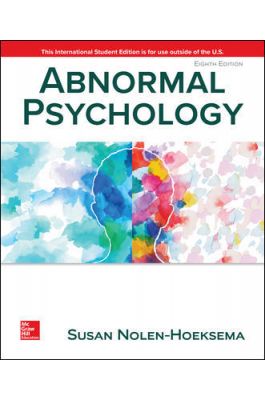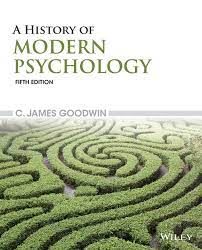Description
Test Bank For Abnormal Psychology 8Th Edition By Susan Nolen
Abnormal Psychology, 8e (Nolen-Hoeksema)
Chapter 1 Looking at Abnormality
1) The continuum model of abnormality demonstrates that:
A) there is a clear distinction between dysfunctional and deviant behavior.
B) psychologists must make objective decisions about what warrants a diagnosis.
C) individuals are labeled as either having a disorder or not having one.
D) no sharp line exists between what is normal and abnormal.
2) To qualify as abnormal, behaviors, thoughts, and feelings must be
A) diagnosable.
B) unusual, distressing, impairing, or dangerous.
C) identifiable in the DSM-5.
D) violent.
3) When determining abnormality, behaviors, thoughts, and ________ are assessed.
A) family history
B) genetics
C) feelings
D) medication
4) The study of abnormal psychology is the study of people who suffer mental, emotional, and often physical pain. This is also referred to as
A) psychopathology.
B) psychometry.
C) parapsychology.
D) behavioral psychology.
5) Margaret is a 27-year-old soccer mom who never misses her daughter’s games. Her friends argue that her behavior is embarrassing, and she is making a fool of herself when she repeatedly yells and jumps to her feet. Margaret insists that no one is paying attention to her behavior and states, “It’s a soccer game—people are expected to get excited!” Which of the following determines whether Margaret’s behavior is normal?
A) Her social status
B) Gender differences
C) The context in which it is performed
D) Individual differences
6) When an observer takes into account the context or circumstances surrounding someone’s behavior to determine whether they are normal or abnormal, it means that:
A) the observer assesses the behavior based on her/his own biases and prejudices.
B) the observer considers the behavior normal if it seems appropriate for that particular situation.
C) the observer judges the individual’s personality based on the observer’s cognitive abilities.
D) the observer’s evaluation of the behavior lacks any theoretical grounding.
7) An advantage of cultural relativism is that:
A) it does not impose the standards of one culture on judgments of abnormality.
B) there is a tendency to view all behaviors that are unusual, or deviant, as abnormal.
C) it allows those in power to label and silence minorities by labeling them as abnormal.
D) it does not adopt a continuum perspective of abnormal behavior; rather, it is an either/or proposition.
8) Which criterion for abnormality implies that the presence of a disease is causing given behavior?
A) Deviance
B) Unusualness
C) Distress
D) Mental Illness
9) Rachel teaches the second grade and suspects that two students in her class have behavioral problems. Although she works fervently to keep the class running smoothly, the students’ behaviors continually disrupt the learning environment. When the two students blurt out the answers before being called upon, push others in line, or constantly get out of their seats, other students become distracted and irritated. According to which criterion will these students’ behaviors most likely be considered abnormal?
A) Cultural relativism
B) Mental illness
C) Distress
D) Gender relativism
10) What are “the four Ds” of abnormality?
A) Distress, delusion, deviance, and derision
B) Deviance, dysfunction, disorder, and danger
C) Danger, disorder, delusion, and dysfunction
D) Dysfunction, distress, deviance, and dangerousness
11) Theorists who argue that behaviors can only be abnormal relative to cultural norms, are proponents of:
A) cultural hegemony.
B) cultural regeneration.
C) cultural imperialism.
D) cultural relativism.
12) Cultural relativists argue that:
A) behaviors must be universally accepted to be considered normal.
B) context, and not culture, influences the evaluation of behaviors as abnormal.
C) the use of gender roles as a basis for assessing abnormal behaviors can be misleading.
D) no universal standards or rules exist for labeling behaviors as abnormal.
13) ________ noted that, throughout history, societies have labeled individuals and groups abnormal in order to justify controlling or silencing them.
A) Thomas Szasz
B) Samuel Cartwright
C) Clifford Beers
D) Johann Weyer
14) In some parts of the world, corporal punishment is a traditional child rearing practice, whereas the practice is frowned upon in other places. In the context of abnormality, this is reflective of
A) mental illness.
B) dysfunction.
C) distress.
D) cultural relativism.
15) In the context of cultural relativism, when the slave trade was active in the United States, slaves who tried to escape bondage could be diagnosed with a mental disease that was said to have caused them to:
A) misunderstand their roles.
B) desire freedom from their masters.
C) refuse to work in the fields.
D) experience delusions of grandeur.
16) Which of the following is true of the distress criterion for abnormality?
A) The individual has no desire to be rid of the disruptive behavior.
B) The behavior must violate societal norms.
C) The individual must suffer as a result of the behavior.
D) The behavior must also meet the unusualness criteria.
17) Historically, which three types of theories have been used to define abnormal behavior?
A) Sociological, religious, and psychological
B) Biological, psychological, and sociological
C) Biological, sociological, and supernatural
D) Biological, supernatural, and psychological
18) Which of the following incorrectly pairs the historical perspective on abnormal behavior with an abnormality?
A) Psychological theories/trauma
B) Supernatural theories/chronic stress
C) Biological theories/physical disease
D) Supernatural theories/divine intervention
19) The supernatural perspective on abnormality most supported ________ as an approach to treatment.
A) relaxation
B) herbal medication
C) exorcism
D) restoration of bodily health
20) The practice of drilling circular holes in the skulls of people displaying abnormal behaviors in order to free evil spirits was known as
A) trephination.
B) exorcism.
C) atonement.
D) blood letting.
21) Yin and yang (positive and negative forces) are concepts from ancient
A) China.
B) Greece.
C) Egypt.
D) Rome.
22) According to ancient Chinese medicine, excited insanity was due to the presence of a(n):
A) minimal negative force.
B) excessive negative force.
C) minimal positive force.
D) excessive positive force.
23) Xia has been feeling sad and lonely over the last several days. According to ancient Chinese medical philosophy, Xia’s mood is likely the result of:
A) vital air flowing on the lungs.
B) a lack of positive force.
C) bewitchment.
D) excessive chaos in her life.
24) Which ancient text on abnormal behavior is the oldest?
A) Oxyrhynchus Papyri
B) Magdalen Papyrus
C) Kahun Papyrus
D) Elephantine Papyri
25) Ancient Egyptians and Greeks held that a woman’s uterus:
A) caused psychological abnormalities by dislodging and wandering inside the body.
B) contained mystical powers that caused it to create physiological harmony.
C) made women inferior to men and made women suffer emotional pain more often than men.
D) made women superior as it possessed the power of creation.
26) Which Greek term is used today to refer to physiological symptoms that are probably the result of psychological processes?
A) Apathea
B) Hysteria
C) Thanatos
D) Choleric
27) Most Greeks and Romans saw madness as:
A) a cause for physical disease.
B) a result of chronic stress.
C) an affliction from the gods.
D) a result of trauma.
28) Which historical figures argued that some forms of madness were divine and could be the source of great literary and prophetic gifts?
A) Socrates and Plato
B) Plato and Hippocrates
C) Homer and Plato
D) Hippocrates and Socrates
29) Hippocrates attributed abnormality to:
A) afflictions from the gods.
B) divine intervention.
C) chronic stress and trauma.
D) imbalances in bodily humors.
30) According to Hippocrates, abnormal behavior could be attributed to imbalances in the four basic humors of the body. Which of the following courses of treatment was used to restore the balance?
A) Fasting
B) Ostracism
C) Bleeding the patient
D) Spiritual exorcism





Be the first to review “Test Bank For Abnormal Psychology 8Th Edition By Susan Nolen”